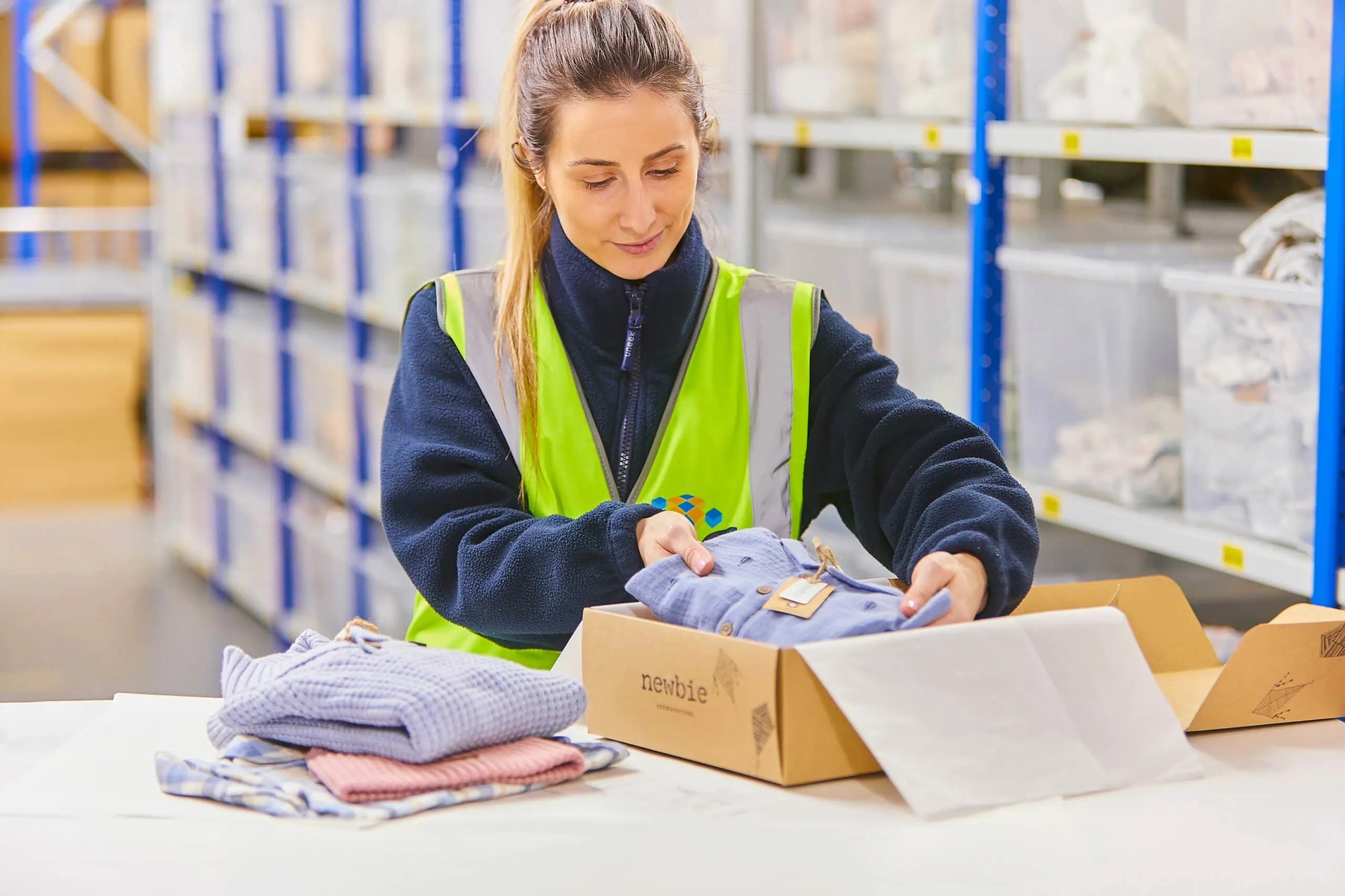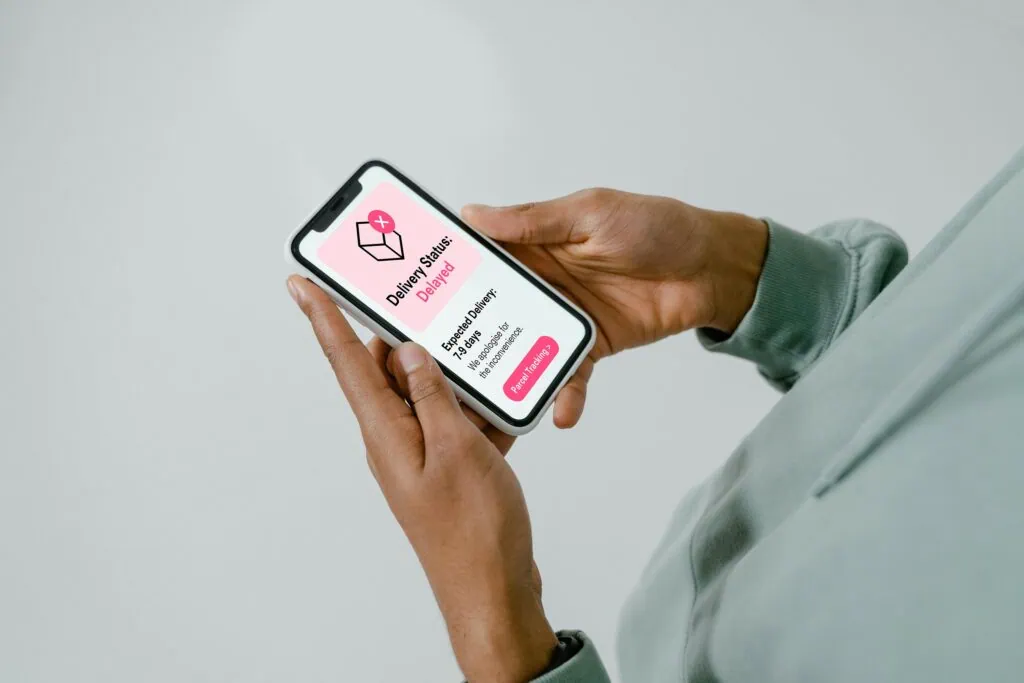
The world of fashion changes incredibly quickly as new trends come on-stream – and the world of e-commerce, with new sales channels and a global marketplace to exploit, is just the same. Put the two together and you have fashion e-commerce businesses, who have to work tirelessly to stay on the pulse of new opportunities for growth and success.
Behind the scenes of your latest designs and intuitive website or app, fulfilment is critically important to making the most of fashion e-commerce trends. At ILG, we’ve worked with countless fashion brands over the years, ensuring their customers get the orders they want, where and when they want them, without any stress or disappointment.
Making that happen means understanding where new trends are coming from and having the flexibility to adapt fulfilment strategies accordingly. In this guide, we’ll explore the biggest fashion e-commerce trends today, and how your fulfilment partner can pivot to cater for them.
Jump to:
- Key Fashion E-Commerce Trends
- What do Fashion E-Commerce Trends Mean for Fulfilment?
- Take Full Advantage of Fashion E-Commerce Trends
- FAQs
Key Fashion E-Commerce Trends
So how does the world of e-commerce fashion look today? Increasingly, we’re seeing greater steps towards ‘joining the dots’ of the customer experience, and ironing out all the pain points and flaws that can so often cause customer frustration:
Sustainability becoming essential
More and more consumers are becoming aware of the impact that fashion has on the environment. Research has found that more than a third of consumers have made significant changes in their buying habits so that they can shop more sustainably. As a result, being able to demonstrate a meaningful commitment to sustainability is essential – not only in how clothes are made, but also in how they’re sold and transported across the supply chain.
Fast fashion out, micro-trends in
The concept of fast fashion is being increasingly superseded by micro-trends driven by social media. For example, in February 2025, search rates for bootcut jeans rose by 146% after Kendrick Lamar wore a pair during his Super Bowl half-time show. Agile fashion e-commerce retailers are responding to these sudden spikes of interest by getting on-trend products into the market quickly.
Increasing return rates
Fashion experiences some of the highest return rates of any e-commerce sector: rates of 20% to 40% are commonplace. Part of this is down to sizing, fit, colour or damage in transit, but it’s also often caused by ‘bracketing’: as many as 69% of Generation Z shoppers admit to the practice, where they will buy several different sizes or colours of the same product, keep the one they like, and return the rest. But whatever the cause, this adds to the time and resources fashion e-commerce brands have to devote to returns management.
Greater personalisation
In every area of e-commerce, consumer expectations for personalisation are rising all the time. Nearly three-quarters of online shoppers now expect brands to respond to their individual needs and expectations. Hyper-personalised marketing messaging and product recommendations have a big part to play here, but virtually every part of the customer journey can be exploited for personalisation. This includes fulfilment, with services such as product personalisation, gift-wrapping, and flexible shipping and delivery options.
AI-powered customer experiences
Connected to the previous point, artificial intelligence should play a leading role in enabling that personalisation. According to Pymnts, 51% of consumers now expect a shopping experience to include at least one AI feature, and that figure rises to 73% among the fashion-conscious Generation Z cohort. From a fashion e-commerce perspective, this can include personalised size recommendations that help reduce the risk of return rates, and deeper insights that inform decisions about seasonal demand management and inventory.
Flexible payment and delivery
Customers want their goods faster than ever before. CapitalOne research has found that 74% expect delivery within two days of purchase, and 56% of those aged between 18 and 34 expect same-day delivery. But of course, every customer is different, so the best way to cater for as many customers as possible is to offer the widest range of payment and delivery choices. For example, Amazon allows customers to pay for expedited or express shipping in exchange for an additional fee, if customers are particularly keen to get their goods quickly.
Omnichannel integration
The lines between fashion e-commerce and physical retail have never been more blurred. According to Emarketer, 80% of consumers will access a retailer’s website while visiting one of their stores in person, while a similar number (74%) will do the same on the retailer’s app. Consumers expect a seamless, consistent experience however they interact with a brand, and want to access the same delivery, purchasing and returns options at every possible touchpoint.
Social media and livestream sales
As recently as 2019, only 21% of consumers were making purchases directly through social media. But according to PwC, that figure is now up to 46%, emphasising the importance of integrating social media and livestream sales into delivery and fulfilment. No longer do consumers want to see something on social media, then visit an e-commerce site and go through the full buying journey: instead, they want something that is as close to ‘see, click, buy’ as it possibly can be.
What do Fashion E-Commerce Trends Mean for Fulfilment?
The good news is that these fashion e-commerce trends are opening up huge opportunities to drive success through expert, efficient fulfilment. In order to maximise this potential, we recommend the following:
Reduce environmental impact
A good fulfilment partner will have a range of initiatives for making fashion e-commerce more sustainable. This includes using appropriately-sized packaging made from renewable materials, supporting sustainable final-mile delivery options for customers, and being able to bundle multiple orders together into one shipment. This can dovetail your own efforts to source and/or make clothes in more ethical and sustainable ways.
React quickly to new trends through scaling
To be able to take advantage of new trends and drive sales quicker than competitors, it’s essential to have fulfilment infrastructure in place that can be scaled up or down quickly and easily. Scalable inventory capacity can be increased when there are spikes in demand and brought back down again as a micro-trend fizzles out or as seasonal demand recedes.
Provide flexibility to deal with returns
A similar level of flexibility can also help ease the admin burden of the high return rates that often affect fashion e-commerce businesses. They can reliably pick and pack the right items, so that customers aren’t left dissatisfied with what they’ve received, and they can also help you leverage customer feedback and technology to correctly align products with their online descriptions, sizing and imagery. A user-friendly, branded returns portal also eases the customer’s process of handling returns, including real-time tracking that aids transparency.
Integrate every channel with inventory
With so many different channels to integrate, it can be difficult for fashion e-commerce retailers to keep up with everything that’s going on. Working with fashion-specific omnichannel logistics expertise can help streamline all fulfilment demands across every channel you use. This can give you a single view of inventory, a centralised customer service team, and can support a seamless and consistent customer experience across every touchpoint, including in physical stores if your business has them.
Expand delivery and shipping options
Not only should you offer the widest possible range of shipping and delivery options, but you should also consider varying these options from one product to another. Items that are heavy, bulky or need to be handled with care can cost a lot more to ship, especially if expedited or express shipping is required. Providing more choice, and tailoring shipping options to the characteristics of the product, can help maximise cost efficiency without compromising on customer expectations or losing customers at checkout.
Keep close track of performance
Being able to track how well fulfilment is running is vital, so that you can make informed decisions around the future of your business, and so that you can respond to any issues before they can have too much of an impact. Achieving this requires the integration of different data streams and applications, which a third-party logistics expert (3PL) can support you with. Fully flexible API integrations can be designed around the specifics of your fashion e-commerce operation, so that you retain full visibility and control of fulfilment even when the work is being done by your expert partner.
Go the extra mile with customer experience
Finishing touches like gift-wrapping and product personalisation can make a real difference to customer satisfaction, but they can often take up a lot of time that a busy fashion e-commerce retailer struggles to find. If outsourcing your fulfilment to a 3PL, then look for one that can also provide a tailored approach to fashion fulfilment and encompass extra services that can make your brand stand out from the competition.
Take Full Advantage of Fashion E-Commerce Trends
It’s important to remember that many of the fashion e-commerce trends listed in this guide will evolve very quickly. So, if you don’t feel that you have the right flexibility or expertise in place to make fast changes and seize new opportunities, working with the right third-party logistics (3PL) partner can make a real difference.
Our fashion fulfilment services can cover every base, whether you’re shipping to customers within the UK or all over the world. Everything we do is focused around positive customer experience, ensuring you meet the demands of your fashion-conscious consumers, without the admin burden of managing inventory, delivery or returns.
To find out more, or to discuss your wider fashion e-commerce fulfilment needs, get in touch with our team today. And to find out more about our success in the fashion industry, read more about our partnership with Scamp & Dude, based on an open discussion with Founder and CEO, Jo Tutchener Sharp.
FAQs
How quickly can I scale up new fulfilment capacity?
If partnering with a leading third-party logistics provider, very! They will be able to make new arrangements as soon as you forecast your demand changing, so that you respond quickly to micro-trends and other spikes in demand, and then scale capacity back again later on so that you don’t incur any unnecessary costs.
How can a third-party logistics provider make my fulfilment more sustainable?
All good third-party logistics providers will have their own sustainability programmes and commitments that you can take advantage of. These include using sustainable energy and packaging materials, reducing waste, increasing recycling, and committing to stringent international sustainability standards. Additionally, they’ll be able to advise you on sustainable practices such as bundling items together in order to reduce transport requirements, offering sustainable delivery options and working with you to improve packaging.
How can I align fulfilment with one-off events like flash sales?
Having the ability to scale fulfilment requirements and inventory capacity almost in real-time gives you the ability to hold flash sales at will. By contacting your third-party logistics partner in the first instance, you’ll have the inventory and logistics arrangements ready and waiting, so that the practicalities of the supply chain never hold you back from acting fast.
Contact Us
More insights >
Top Social Commerce Tips to Boost Peak Sales
Discover the social commerce strategies that drive Peak Season sales. Read our practical tips for growing, founder-led brands.
The Hidden Cost of Failed Deliveries During Peak and How to Avoid Them
We delve into the often-overlooked expenses occurred due to failed delivery and outline how a strategic approach and advanced delivery management can help avoid these to navigate Peak season successfully.

